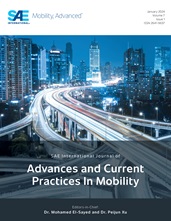OTA (over the air) updates help automotive manufacturers to reduce vehicle warranty and recall costs. Vehicle recall is expensive, and many automotive manufacturers have implemented OTA updates. Updating parameters for connected vehicles can be challenging when dealing with thousands of vehicles across different regions. For example, how does the manufacturer prioritise which vehicles need updating? Environmental and geographical factors affect degradation rates and vehicles in hotter regions or congested cities may degrade faster.
For EVs, updating the BMS (battery management system) parameters requires careful analysis prior to the update being deployed, to maximise impact and reduce the likelihood of adverse behaviour being introduced. The analysis overhead increases with the number of vehicles. This is because it requires simulation and optimisation of the fleet BMS calibration in a digital twin environment. A targeted approach is the best option to prioritise vehicles for software updates.
Smart OTA scheduling makes use of predictive analytics for battery health prediction together with prescriptive analytics in a smart decision engine. The smart scheduling system uses a deep reinforcement learning (DRL) agent in a digital twin environment. The DRL agent can learn and simulate different scenarios and identify the best update sequence depending on monthly temperature profile, traffic congestion, and many other factors to slow down the degradation of fleet health. Whenever there is an update, the DRL agent assesses the situation and recommends the appropriate action to minimise vehicle failures and maintain fleet health. In a large-scale simulation, this approach improved average fleet battery life by 8 to 13% and increased average vehicle range by 2%.
